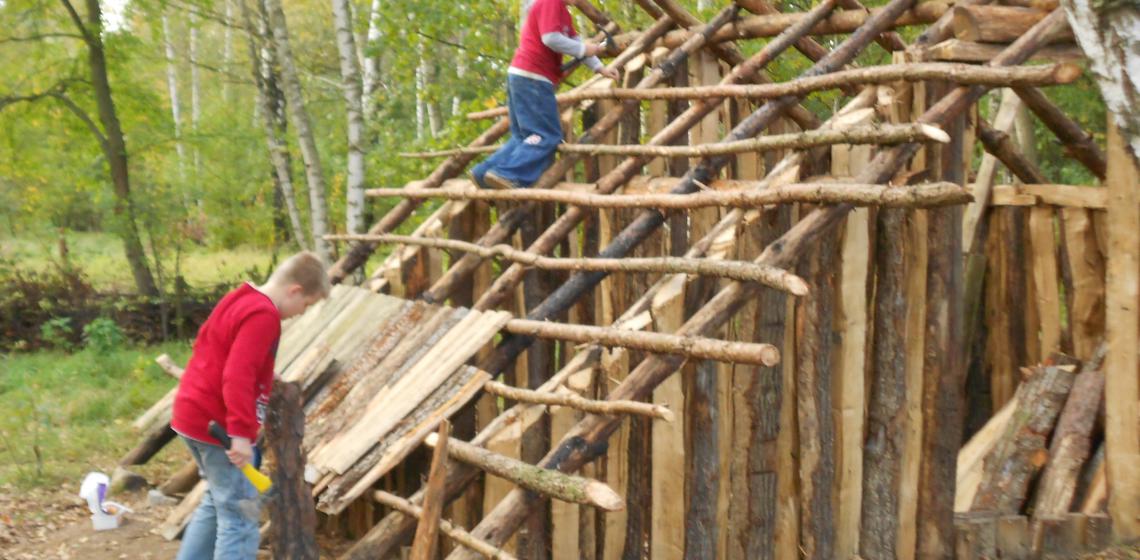Abenteuer- und Archäologiespielplatz Moorwiese (DE)

Building huts is always possible at the playground. Children get the possibility of making their own play area following their own ideas. Everything needed for the huts is made available: shovels, hammers, crowbar, saw, nails, wood. The playground staff is there to support and advise and intervene in the case of dangerous constructions.
There is always a risk, a plank which is loose or a nail which is sticking out. The consciousness about this is part of the concept. It raises awareness and in the end is a better protection for dangers than the futile attempt to ban risks from life.
While classic archaeological methods are about gaining knowledge through observation and interpretation of finds and archaeological sites, experimental archaeology tries to deepen this knowledge through experience.
The Moorwiese staff tries to (re)construct techniques of the past and let the children experience these. The (re)constructed, (re)invented artifacts should resemble the known archaeological artifacts as close as possible. Moorwiese focuses on the region around Berlin and Northern Germany, especially the Bronze and Iron Age. The oldest excavations in this part of town date to 1910-1914 and continue to present day. The Iron Age food storage at Moorwiese for example has an excavation nearby as inspiration. Another building is the future stable, built of split planks and an Iron Age split plank well.
Children work with making ceramic pots, can shoot with bow and arrow or sail a dugout canoe made of a poplar tree. These offers are in the public area in the afternoons although those also get specially organised for school groups
